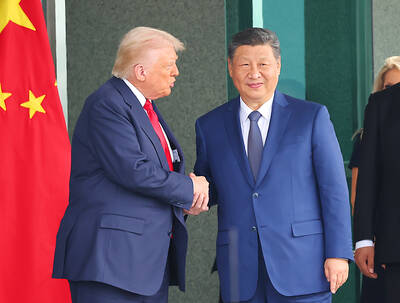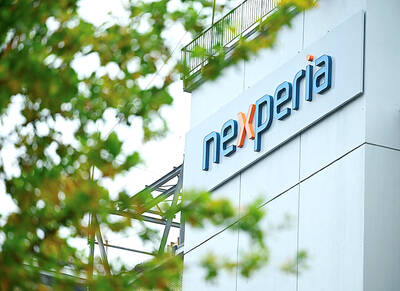Largan Precision Co (大立光), the nation's leading maker of camera lenses, posted higher-than-expected quarterly profits yesterday, thanks to surging sales in mobile-phone lenses.
The company's gross profit for the first quarter hit 61 percent, up from 42 percent during the same period a year ago.
Net income rose 356 percent to reach NT$822.25 million (US$25.31 million). Net sales expanded 189 percent to reach NT$1.62 billion for the first three months of the year, according to the company.
Meanwhile, earnings per share were NT$7.17, soaring from last year's NT$1.57.
"We expect the second quarter's momentum will be pretty much the same as the first. We certainly wish for a better second half, which is a traditionally busy period for optical-lens industry," chairman and chief executive Scott Lin (林耀英) told an investors' conference.
Growth uncertain
However, Lin was tight-lipped on projected growth, saying that factors such as yield rates, average selling prices and orders need to be taken into account.
In the first quarter, 80 percent of revenues were generated from handset lenses, while digital-camera lenses accounted for 10 percent.
The Taichung-based company said that multifunctional printer lenses and projector lenses made up 7 percent and 1 percent.
"Largan's first-quarter gross profit was slightly higher than the industry's projection," said Tom Lu (呂文輝), senior vice president of fund management department at Uni-President Asset Management Corp (統一投信).
This dynamic result was attributed to the company's product mix, which was able to ride on market trends, he added.
Though strong growth in the global handset market will continue to benefit camera-lens makers in the next few years, Largan may venture into new segments to secure long-term business sustainability, he said.
Shares of Largan were up NT$0.66 percent to close at NT$612 on the Taiwan Stock Exchange yesterday.

Nissan Motor Co has agreed to sell its global headquarters in Yokohama for ¥97 billion (US$630 million) to a group sponsored by Taiwanese autoparts maker Minth Group (敏實集團), as the struggling automaker seeks to shore up its financial position. The acquisition is led by a special purchase company managed by KJR Management Ltd, a Japanese real-estate unit of private equity giant KKR & Co, people familiar with the matter said. KJR said it would act as asset manager together with Mizuho Real Estate Management Co. Nissan is undergoing a broad cost-cutting campaign by eliminating jobs and shuttering plants as it grapples

PERSISTENT RUMORS: Nvidia’s CEO said the firm is not in talks to sell AI chips to China, but he would welcome a change in US policy barring the activity Nvidia Corp CEO Jensen Huang (黃仁勳) said his company is not in discussions to sell its Blackwell artificial intelligence (AI) chips to Chinese firms, waving off speculation it is trying to engineer a return to the world’s largest semiconductor market. Huang, who arrived in Taiwan yesterday ahead of meetings with longtime partner Taiwan Semiconductor Manufacturing Co (TSMC, 台積電), took the opportunity to clarify recent comments about the US-China AI race. The Nvidia head caused a stir in an interview this week with the Financial Times, in which he was quoted as saying “China will win” the AI race. Huang yesterday said

TEMPORARY TRUCE: China has made concessions to ease rare earth trade controls, among others, while Washington holds fire on a 100% tariff on all Chinese goods China is effectively suspending implementation of additional export controls on rare earth metals and terminating investigations targeting US companies in the semiconductor supply chain, the White House announced. The White House on Saturday issued a fact sheet outlining some details of the trade pact agreed to earlier in the week by US President Donald Trump and Chinese President Xi Jinping (習近平) that aimed to ease tensions between the world’s two largest economies. Under the deal, China is to issue general licenses valid for exports of rare earths, gallium, germanium, antimony and graphite “for the benefit of US end users and their suppliers

Dutch chipmaker Nexperia BV’s China unit yesterday said that it had established sufficient inventories of finished goods and works-in-progress, and that its supply chain remained secure and stable after its parent halted wafer supplies. The Dutch company suspended supplies of wafers to its Chinese assembly plant a week ago, calling it “a direct consequence of the local management’s recent failure to comply with the agreed contractual payment terms,” Reuters reported on Friday last week. Its China unit called Nexperia’s suspension “unilateral” and “extremely irresponsible,” adding that the Dutch parent’s claim about contractual payment was “misleading and highly deceptive,” according to a statement